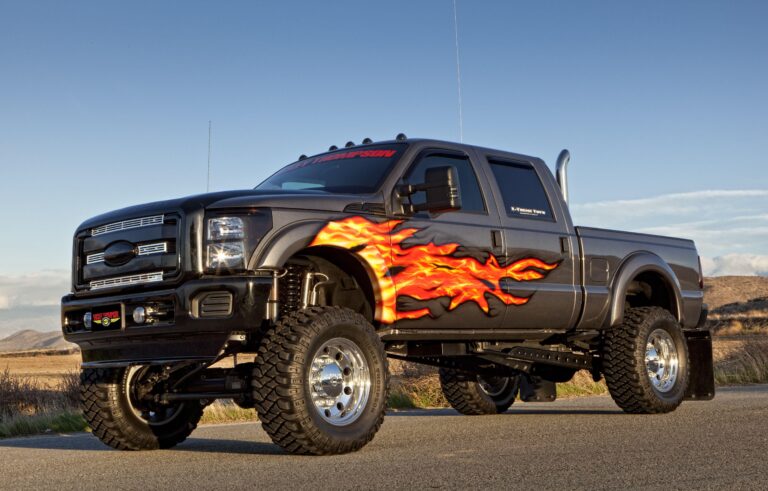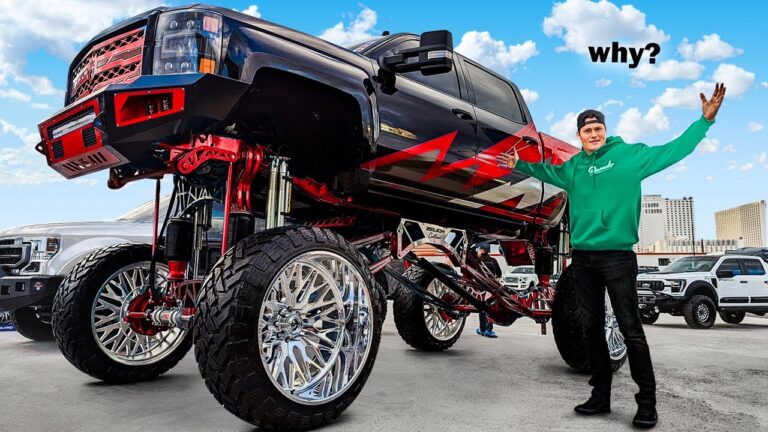Old Dodge Semi Trucks For Sale: A Comprehensive Buyer’s Guide
Old Dodge Semi Trucks For Sale: A Comprehensive Buyer’s Guide cars.truckstrend.com
The rumble of a vintage diesel engine, the classic lines of a bygone era, and the undeniable sense of rugged durability – for many enthusiasts and practical operators, the allure of an old Dodge semi truck is undeniable. These aren’t just vehicles; they are rolling pieces of American industrial history, workhorses that once traversed highways and hauled the nation’s goods. Far from being mere relics, old Dodge semi trucks are increasingly sought after for restoration projects, unique commercial applications, or simply as a testament to automotive heritage.
This comprehensive guide delves into the world of old Dodge semi trucks for sale, offering insights into their enduring appeal, what to look for, where to find them, and the practical considerations involved in owning one of these iconic machines. Whether you’re a seasoned collector, a aspiring restorer, or someone seeking a distinctive vehicle for specific tasks, understanding the nuances of the market is key to making an informed purchase.
Old Dodge Semi Trucks For Sale: A Comprehensive Buyer’s Guide
The Enduring Legacy of Dodge Heavy-Duty Trucks
Dodge’s foray into the heavy-duty truck market stretches back decades, establishing a reputation for building robust, no-nonsense vehicles designed to withstand the rigors of demanding work. While perhaps not as globally ubiquitous as some competitors, Dodge carved out a significant niche, particularly in North America, with its dependable engines and sturdy chassis.
From the medium-duty B-series and C-series (including cab-over models often adapted for semi-trailer use) to the more conventional D-series, Dodge trucks were known for their straightforward engineering and ease of maintenance. Later, models like the distinctive "Big Horn" and the L-series cab-overs showcased Dodge’s commitment to heavy haulage, often featuring Cummins, Caterpillar, or Detroit Diesel engines – a testament to their reliability and power. This legacy of simple, durable construction is precisely what makes these older trucks so appealing today, offering a refreshing contrast to the complex electronics of modern rigs.
Why Buy an Old Dodge Semi? The Allure and the Advantages
The decision to purchase an old Dodge semi truck is often driven by a blend of passion, practicality, and potential. Their appeal extends far beyond mere transportation:
- Nostalgia and Collectibility: Owning an old Dodge semi is owning a tangible piece of history. For many, it evokes memories of a simpler time or represents a passion for classic machinery. Rare models, especially the Big Horn, have become highly collectible, appreciating in value.
- Robust Simplicity: Unlike contemporary trucks laden with intricate computer systems and sensors, older Dodges boast mechanical simplicity. This translates to easier diagnostics and repairs, often manageable by a skilled amateur or a local mechanic without specialized software.
- Cost-Effectiveness (Initial Purchase): The initial outlay for an old Dodge semi can be significantly less than a modern equivalent, making it an attractive option for budget-conscious buyers or those looking for a unique project.
- Customization Potential: These trucks are a blank canvas for customization. From full frame-off restorations to hot-rod builds, or adapting them for unique applications like mobile workshops, campers, or parade vehicles, the possibilities are vast.
- Unique Workhorse: While not typically suitable for long-haul commercial operations due to efficiency and regulatory concerns, old Dodge semis can still excel in specific roles. They are often ideal for farm use, local heavy hauling, towing classic cars, or as eye-catching promotional vehicles.
- Distinctive Presence: There’s no mistaking an old Dodge semi. Its classic styling turns heads and stands out from the homogenous modern fleet, offering a powerful statement wherever it goes.


Key Models to Look For
While Dodge produced numerous truck lines, certain series are more commonly found or highly prized in the used semi truck market:
- Dodge C-Series (1960-1975): Often featured as cab-over-engine (COE) designs, these were versatile platforms, with heavier versions frequently configured as semi tractors. They are recognizable by their flat fronts and compact footprint.
- Dodge D-Series (Heavy-Duty Variants, 1961-1993): While the D-series encompassed a wide range, the heavier-duty D-500, D-600, and larger models were conventional trucks capable of semi-trailer duty. Later models, especially from the 1970s and 80s, could be found with factory-installed Cummins diesel engines, making them particularly desirable.
- Dodge Big Horn (1973-1975): A legendary and rare beast, the Big Horn was Dodge’s premium, custom-built heavy-duty conventional truck. With its distinctive chrome grille, extended hood, and high-spec interiors, the Big Horn was designed to compete with the top offerings from Peterbilt and Kenworth. Finding one for sale is a rare event, and they command significant prices.
- Dodge L-Series (1975-1979): These were Dodge’s final dedicated heavy-duty cab-over trucks, replacing the C-series. The L-series continued to offer big-bore diesel engine options and robust chassis, though their production run was relatively short.

Where to Find Old Dodge Semi Trucks For Sale
Locating a suitable old Dodge semi requires patience and a multi-faceted search strategy:
- Online Marketplaces: Websites like eBay Motors, Facebook Marketplace, and Craigslist are common starting points. Be specific with your search terms, including year ranges and model names. Specialized heavy truck forums and classic truck groups on social media are also excellent resources.
- Auction Houses: Attend or monitor auctions specializing in vintage vehicles, farm equipment, or heavy machinery. Sometimes, a forgotten gem might surface here.
- Specialty Dealerships: A handful of dealers specialize in classic and antique trucks. While their prices might be higher, they often offer better-vetted vehicles and sometimes even provide restoration services.
- Word of Mouth and Local Ads: Old trucks often sit unused on farms, in rural yards, or forgotten industrial lots. Local classifieds, agricultural publications, or simply asking around in truck stops or rural communities can yield surprising results.
- Salvage Yards and Truck Graveyards: These can be treasure troves for parts, but occasionally a complete, albeit rough, truck might be available for purchase.
What to Inspect Before Buying: A Pre-Purchase Checklist
Buying an old semi truck, especially one that might have seen decades of hard work, requires meticulous inspection. Assume nothing and scrutinize everything:
- Frame and Chassis: This is paramount. Look for severe rust, cracks, previous repair welds (especially poor ones), and any signs of twisting or misalignment. Check spring hangers, crossmembers, and fifth wheel attachment points.
- Engine and Drivetrain: Inquire about the engine (Cummins, Cat, Detroit, or original Dodge PowerTech/Slant Six variants for lighter models). Check for leaks (oil, fuel, coolant), excessive smoke (blue, white, black), and unusual noises. Inspect the transmission for smooth shifting (if manual) or fluid condition (if automatic). Check differentials for leaks and play.
- Brakes: Ensure the air brake system holds pressure. Inspect air lines, chambers, drums, and linings. For older hydraulic systems, check for leaks and proper function.
- Suspension: Examine leaf springs for cracks or sagging, U-bolts, bushings, and shock absorbers. Look for excessive play in steering components.
- Cab and Interior: Assess rust in floorboards, door sills, and cab mounts. Check the condition of the dashboard, gauges, seats, and wiring. Is it complete? Are all controls present and functional?
- Tires and Wheels: Inspect tire condition, tread depth, and age. Look for cracks or damage to wheels and rims.
- Documentation: Crucial! Ensure the seller has a clear title in their name. Ask for any maintenance records, though these are often scarce for older vehicles.
- Test Drive (If Possible): Drive the truck to assess engine performance under load, transmission shifting, brake effectiveness, steering responsiveness, and any unusual noises or vibrations.
- Professional Inspection: For any significant purchase, hiring a heavy-duty mechanic specializing in older trucks for a pre-purchase inspection is highly recommended. Their trained eye can spot issues you might miss.
Restoration, Maintenance, and Running Costs
Owning an old Dodge semi is a commitment that extends beyond the initial purchase price.
- Parts Availability: Mechanical parts for common engines (like Cummins NTC or Detroit Diesel 6-71/8V-71) are generally available, either new aftermarket or used. However, specific body panels, interior trim, and unique Dodge-specific components can be challenging to find and may require fabrication or extensive searching. Online forums and specialized salvage yards are your best friends.
- Skilled Mechanics: Finding a mechanic experienced with older, purely mechanical diesel engines and truck systems can be difficult. Building a relationship with a seasoned independent heavy-duty mechanic is invaluable.
- Fuel Economy: Expect significantly lower fuel efficiency compared to modern trucks. Older engines are less refined and optimized for emissions or fuel economy.
- Insurance and Registration: Depending on your intended use (commercial, antique, recreational), insurance and registration requirements can vary. Research your state’s regulations thoroughly. Antique tags often come with usage restrictions.
- Potential Hidden Costs: Be prepared for unforeseen expenses. A seemingly minor issue can snowball into a major component rebuild, especially with engines, transmissions, or differentials. Budget for unexpected repairs.
Challenges and Solutions
Owning an old Dodge semi truck comes with its unique set of challenges, but most have viable solutions:
- Challenge: Rust and Structural Integrity.
- Solution: Thorough pre-purchase inspection. For existing rust, be prepared for extensive welding and bodywork. Prioritize frame integrity over cosmetic issues.
- Challenge: Worn Components and Mechanical Issues.
- Solution: Budget for rebuilds or replacements of major components (engine, transmission, differentials, brakes). Many parts are robust and rebuildable.
- Challenge: Lack of Modern Amenities.
- Solution: Embrace the simplicity! If modern comforts are desired, consider aftermarket air conditioning, updated seating, or a modern stereo.
- Challenge: Emissions Regulations.
- Solution: For commercial use, older trucks may not meet current emissions standards in many regions, restricting their operation. Consider non-commercial use (parade, farm, private hauling) where regulations are less stringent or non-existent.
- Challenge: Finding Obscure Parts.
- Solution: Join online communities and forums dedicated to old trucks. Network with other enthusiasts. Explore specialized salvage yards, and be open to fabricating custom parts if necessary.
Old Dodge Semi Trucks For Sale: Estimated Price Guide
The price of an old Dodge semi truck varies dramatically based on its model, year, overall condition, originality, and historical significance. The rare Big Horn models will command the highest prices.
| Model/Year Range (Approx.) | Condition Category | Estimated Price Range (USD) | Notes |
|---|---|---|---|
| Dodge C-Series (60s-70s) | Poor/Restoration Project | $2,000 – $8,000 | Non-running, heavy rust, incomplete. |
| Fair/Running Driver | $8,000 – $18,000 | Running, some issues, needs significant work. | |
| Good/Solid Original | $18,000 – $35,000 | Running, mostly complete, light restoration needed. | |
| Dodge D-Series (70s-80s) | Poor/Restoration Project | $3,000 – $10,000 | Non-running, missing parts, major repairs needed. |
| Fair/Running Driver | $10,000 – $25,000 | Running, usable, but requires attention. | |
| Good/Solid Original | $25,000 – $50,000+ | Well-preserved, potentially with a desirable engine. | |
| Dodge Big Horn (73-75) | Restoration Project | $25,000 – $70,000 | Extremely rare, even rough examples are valuable. |
| Restored/Excellent | $70,000 – $200,000+ | Highly sought-after collector’s item. | |
| Dodge L-Series (70s) | Fair/Running Driver | $7,000 – $20,000 | Functional, but likely needs updates. |
| Good/Solid Original | $20,000 – $45,000 | Usable, well-maintained examples. |
Prices are estimates and can fluctuate significantly based on location, seller, specific features (engine, transmission), and market demand.
Frequently Asked Questions (FAQ)
Q1: Are old Dodge semis reliable?
A1: When properly maintained and restored, many old Dodge semis with robust mechanical components (especially those with Cummins or Detroit Diesel engines) can be very reliable. Their simplicity means fewer complex systems to fail, but consistent maintenance is crucial.
Q2: Can I use an old Dodge semi for commercial hauling?
A2: It depends heavily on your location and the specific regulations. Many older trucks may not meet current emissions standards, safety requirements, or gross vehicle weight ratings for modern commercial operations. They are generally better suited for private, farm, or parade use.
Q3: Where can I find parts for an old Dodge semi?
A3: Parts availability varies. Common mechanical components (engine parts, brakes, driveline) can often be sourced through heavy-duty truck parts suppliers or specialty shops. Body panels and interior pieces are harder to find and may require searching salvage yards, online forums, or custom fabrication.
Q4: What’s the best model for a beginner restorer?
A4: Models with more widely available parts and simpler systems are generally better. A D-series with a common engine like a Cummins 855 or Detroit Diesel might be a good starting point, as these engines are well-documented and parts are more accessible than some of the older, proprietary Dodge engines.
Q5: How much does it cost to restore one?
A5: Restoration costs can range from a few thousand dollars for a basic refresh to well over $100,000 for a professional, frame-off, show-quality restoration. It largely depends on the initial condition of the truck, the desired end result, and whether you do the work yourself or hire professionals.
Conclusion
The pursuit of an old Dodge semi truck for sale is more than just a transaction; it’s an embarkation on a journey. These magnificent machines offer a tangible connection to automotive history, a testament to American engineering, and the satisfaction of preserving a piece of the past. While ownership comes with its challenges—from parts sourcing to restoration efforts—the rewards are immense. The unique presence, the mechanical simplicity, and the sheer joy of bringing a classic workhorse back to life make old Dodge semi trucks an incredibly fulfilling acquisition for the passionate enthusiast. With careful research, a thorough inspection, and a clear understanding of the commitment involved, you can find the perfect vintage Dodge semi to start your own piece of history.






